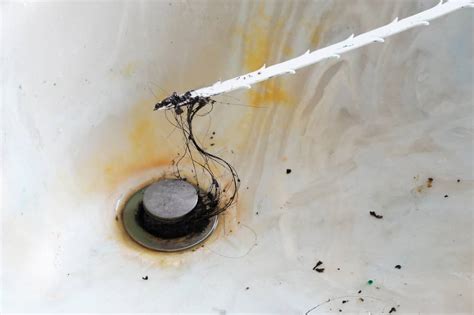Sink Full of Hair? Here's a Simple Solution
A sink full of hair is a frustratingly common problem, especially for those with longer hair or multiple people sharing a bathroom. It's not just unsightly; it can also lead to clogged drains, causing backups and potential plumbing issues. But before you reach for the chemical drain cleaners (which can damage your pipes!), there are simple and effective solutions to tackle this hairy situation. This comprehensive guide will provide you with the tools and techniques to keep your drains flowing freely and your sink hair-free.
Why Does My Sink Get Clogged with Hair?
Hair, especially when combined with soap scum and other debris, easily forms a mat that clings to the inside of your pipes. This mat gradually grows larger, restricting water flow and eventually leading to a complete blockage. The longer your hair, the more likely you are to experience this problem. However, even short hair can contribute to clogs over time.
How to Prevent Hair Clogs in the First Place
Proactive measures are key to avoiding a sink full of hair in the future. Here are some preventative strategies:
-
Invest in a Drain Stopper: A good quality drain stopper, particularly one with fine mesh, can significantly reduce the amount of hair that goes down the drain. These are readily available at most home improvement stores.
-
Regular Cleaning: Make it a habit to regularly clean your drain. This can be done weekly or bi-weekly, depending on the number of people using the sink. Simply use a tool to remove visible hair from the drain opening before it has a chance to go down.
-
Use a Drain Hair Catcher: These simple devices sit inside the drain and catch hair before it reaches the pipes. They're incredibly effective and easy to clean. Simply remove, empty, and rinse the catcher regularly.
How to Remove Hair from a Clogged Sink
If you already have a clogged sink, don't panic! Here's how to tackle the problem effectively:
1. The DIY Approach: Using a Plunger
This is the first line of defense for most minor clogs. Ensure the sink is partially filled with water to create a seal. Then, vigorously plunge up and down for several minutes. The suction should help break up and dislodge the hair clog.
2. The Long-Handled Tool Approach: Reaching for the Clog
A long-handled tool, such as a bent wire hanger or a specialized drain snake, can be inserted into the drain to manually retrieve the hair clog. Carefully maneuver the tool to hook and pull out the hair. Be patient and persistent.
3. Baking Soda and Vinegar: A Natural Solution
This eco-friendly method is surprisingly effective. Pour one cup of baking soda down the drain, followed by one cup of white vinegar. Let it fizz for about 30 minutes, then flush with hot water. The chemical reaction helps break down the hair clog.
4. Chemical Drain Cleaners (Use as a Last Resort)
Chemical drain cleaners should be used sparingly, as they can damage pipes over time. Always follow the manufacturer's instructions carefully, and ensure adequate ventilation.
What if My Sink is Still Clogged After Trying These Methods?
If you've tried the above methods and the sink remains clogged, it's time to call a plumber. A professional plumber has the tools and expertise to handle more stubborn clogs and identify any underlying plumbing issues.
How Often Should I Clean My Sink Drain?
The frequency of cleaning depends on your household size and hair length. As a general rule, weekly or bi-weekly cleaning is recommended to prevent clogs.
What are Some Preventative Measures I Can Take to Avoid Future Clogs?
Regular cleaning, using a drain hair catcher, and investing in a good quality drain stopper are the best preventative measures.
Can I Use a Vacuum to Remove Hair from My Sink Drain?
While possible with the right attachment, it’s generally not as effective as using a plumber's snake or other manual methods. It may also not reach the clog deep enough inside the drainpipe.
This comprehensive guide should equip you with the knowledge and tools to manage hair clogs effectively. Remember, prevention is key, and a little proactive maintenance can save you a lot of hassle (and potential plumbing bills!) in the long run.

